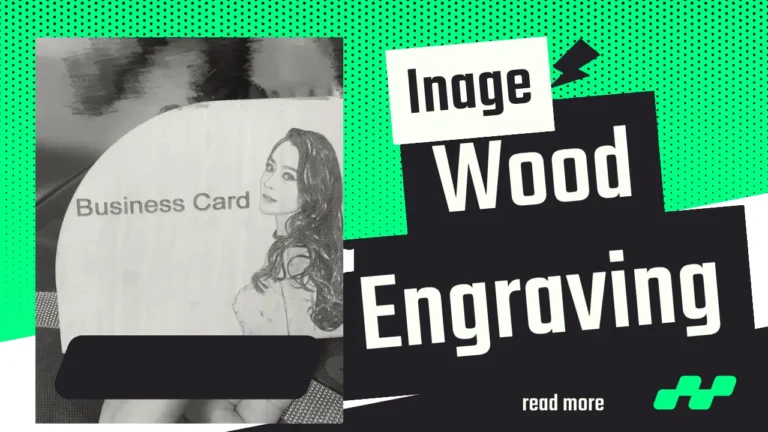Join Workshops
Physical Address
304 North Cardinal St.
Dorchester Center, MA 02124
What are the common problems of laser engravers?
laser engravers are not trouble-free. You may face some common problems such as power cut, precision error, non-movement of laser diode, jammed gantry, inaccurate focus and inaccurate resolution. There are other issues as well.
If you are a small crafter, running a laser engraving business, this is important for you to know the right solution to the problems.
This article is all about the common problems of laser engravers with constructive way-outs for each of the problems.
So, let’s begin!

There’s no light
One common issue with laser engraving is that sometimes the engraver does not emit light. There are a few probable causes of this:
- Maybe the power cable is loose
- Connections to the motor may be poor
- The fuse could blow and hit on the circuit breaker
These are the best practices you should follow in case the engraver is not emitting light or it is not powering on.
- Your first step should be to check the ammeter status. You should be able to find it in the test button from the control panel. If the status is negative then this is sure that the laser engraver is not working at all and you need to plan the next action accordingly.
- Check the power cable, and try reconnecting it to make sure that there is no power interruption.
- Check the power switch from the back of your machine. Sometimes we forget to turn on the power switch.
- If somehow the circuit breaker is tripped off, replace the fuse and re-power the machine.
Laser Lining is Inaccurate
Sometimes the laser lines of CO2 laser cutters do not follow the design and the accuracy costs a piece of material & the time you have put into the work. For such problems, the common causes could be:
- Probably the laser head is loose due to loosening the screw.
- Inspect if there’s anything else that is making the laser head flexible.
- There could be dust in the focusing lens which deteriorates the laser beam.
Do not touch the laser head unless it is at a normal temperature. If you notice a misalignment issue within the work, wait until it cools down.
To get rid of this alignment issue, follow these steps:
- Inspect the screws to ensure that the laser head is tightly fit.
- clean the dust from the focusing lens and retry the work.
Volatile Temperature
Sometimes the heat of the laser light does not act like the prediction. It might get overweight or the temperature may be low. The possible reasons for this problem could be:
- The flow of the coolant might be inaccurate
- Laser lens may be damaged
- Laser settings may be inaccurate to the resistance of the material
- The connection switch could be damaged which interrupts the power flow
Here are the troubleshooting steps:
- If there is an insufficiency of the coolant, check the water circulation and increase the flow of the coolant so that it matches the laser heat.
- Clear dust from the lens or if needed, replace the laser lens to get the right laser heat.
- If the laser settings are not consistent with the engraving material, recheck the settings. We strongly recommend taking the help of the experts or using recommended material by the manufacturer.
- If the connection switch is the issue, check and fix that or replace the switch.
Inaccuracy in Depth
Sometimes laser engraving goes into the wrong depth and burns the material. If you are facing the incorrect depth issue, the problems could be due to the following reasons:
- Error in focal length
- Inappropriate water circulation
- Inaccurate light path settings
- Damaged lens
- Inaccurate crossbeam
- The laser tube is aged
Probably troubleshooting steps could be:
- Check and set the right water circulation
- Re-adjust the light path and focal lens settings
- Re-check the material thickness and revise the laser settings accordingly
- Re-check the crossbeam alignment and adjust it parallelly
- Clean the laser tube and replace the focal lens if required
- Replace the laser tube
Abnormality in engraved font
Sometimes the engraved font does not seem to be similar to the actual design. Here’s why you could face such an issue:
- Volatile laser head
- Belt tension of the X & Y axis is inaccurately set
- The motor is not working well
The troubleshooting steps are as follows:
- Identify the problems in the laser head and make sure that the head is fitting well in a tight manner
- Check the belt tension and reset that properly for the X & Y axis
- If the motor is not working well, repair or replace the motor
- Check if there are any other screws that are making the overall laser engraving process volatile. If so, fix those
Damaged Lense
Sometimes, there could be minor cracks in the laser lens which deteriorates the quality of laser engraving. Here’s how you can fix that:
- Try adhesive tape or epoxy solution to fix the minor cracks
- If the cracks are severe, replace the entire lens
While replacing, you should always double sure the size and the type of the laser light with the earlier one.
Carving Error
Another common problem of laser engraving could be inaccurate depth and speed of carving. Usually, it happens due to inaccuracy in the focal length. For this, you should do the followings:
- Clean the dust from the focal lens
- Clean the laser tube
- Check the laser path and try enhancing the working current. However, you shouldn’t cross the maximum limit
- Upgrade the laser tube
Automatic Reset
Sometimes the engraver may reset the settings automatically even if the work is not completed. Probable reasons are:
- Connection disruption
- Inaccuracy in grounding condition
- Strong electric or magnetic connection nearby
- The original drawing may contain some missing stroke
- Damaged laser tube or laser beam
To troubleshoot this error, follow these steps:
- Check the condition of the grounding and make sure the grounding wares match the manufacturer’s specifications.
- Fix all the connections and make sure no one is loosed.
- Change the position of the machine if there is any heavy magnetic machine nearby.
- Clean the laser head and laser tube, and if needed replace them.
Laser moves but does not fire
If your laser engraver’s head moves but isn’t firing, there are a few things you can check to get it back up and running. First, make sure the emergency stop button isn’t pressed; it’s an easy fix but often overlooked. Then, check the power settings in your software—sometimes, the laser doesn’t fire because the power level is too low. Inspect the laser tube for any signs of damage or wear; a broken or old tube can be the culprit. Verify that all connections and wiring, particularly to the power supply, are secure and undamaged. Don’t forget to check the water cooling system; inadequate cooling can also cause firing issues.
Next, examine the mirrors and lenses. Dirty or misaligned optics can prevent the laser from firing correctly. Take a look at the control board and software settings for any misconfigurations. If none of these steps solve the problem, it might be time to call in a professional to avoid causing more damage. Regular maintenance and proper setup can help keep your laser engraver running smoothly and efficiently.
Laser is skipping the cutting path
If your laser engraver skips parts of the cut path, there are a few things to look into. Start with the speed and power settings; if they’re off, the laser might miss sections. Also, check the worktable for any debris or obstacles. Inspect the mirrors and lenses; they need to be clean and aligned properly. The belts and pulleys also matter—make sure they’re not too tight or loose.
Look at the laser tube; if it’s old or damaged, that could be your problem. Double-check your software settings and the design file for any errors. If all else fails, recalibrate the machine or update the firmware. Keeping up with regular maintenance, like cleaning and alignment, will help keep your engraver running smoothly and accurately.
Laser is not forming a perfect circle
If your laser engraver’s cuts aren’t forming perfect circles, several potential issues could be at play. Start by inspecting the mechanical components—belts, pulleys, and rails—for any wear or misalignment, as these directly affect cutting accuracy. Verify the laser beam alignment, as a misaligned beam can lead to distorted cuts. Additionally, check your software settings, including vector settings and the design file, since errors here can also cause problems.
Speed and power settings are crucial; improper settings can result in imperfect cuts. Ensure that mirrors and lenses are clean and properly aligned, as dirt or misalignment can disrupt the laser beam’s path. Don’t forget to check for firmware and software updates, as these can contain crucial fixes. If none of these steps work, it might be time to consult a professional for a more in-depth analysis and solution.
Laser is skipping the lines
If your laser engraver is skipping lines during engraving, start by checking for loose belts and pulleys; they need to be tight for precise movement. Make sure the rail and bearings are clean and well-lubricated, as dirt can obstruct smooth operation. Verify the alignment of the laser head and focus lens, and inspect the stepper motors and their drivers for any malfunctions. Additionally, check the engraver’s firmware and software settings to rule out any glitches.
Sometimes, the issue might lie in the design file itself. Ensure the file is correctly formatted and free of errors. Inspect the material being engraved; uneven surfaces can cause skips. Regular maintenance and a proper setup can help prevent these problems. If issues persist, consulting a professional technician might be necessary. Keeping your laser engraver in top condition is essential for accurate and consistent performance.
Wrapping Up
These were the top common issues people often encounter with laser engravers. If your situation is different, do not hesitate to reach us. We will surely get back with a constructive solution.
For reference, follow this video



